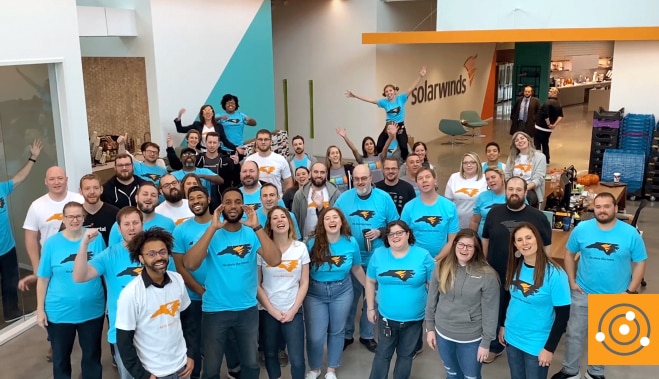20 Years of Your Expertise


Page Contents
Page Contents
Sometimes it’s hard to believe SolarWinds turned 20 this year. That’s eons to survive as an independent software company, much less to have grown into an industry leader. But there’s a simple reason for it. SolarWinds is that rare example of what happens when a company not only listens to its customers, but puts them at the center of its most important decisions. It’s a privilege to be part of the company from its first days in Austin because I’ve been lucky to be part of something unique. You, our users, built and grew A Thing—an actual software company—with your ideas, and genuine enthusiasm. I like to say SolarWinds builds and evolves tools the way you would if only you had a little more time in your day. I truly believe SolarWinds is yours.
Many in the THWACK® community know I’m part of the furniture at this point, but most don’t know the story of how SolarWinds got its start. When I joined many offices ago in 2007, the whole team could fit into one meeting room. I’d helped a couple of start-ups along the way, and the scale was familiar but for one thing—we already had about 50,000 customers. And working with so many of you online, over the phone, and in person, it felt like a much bigger company from day one. That was the first hint that users and SolarWinds blur conventional divisions between a company and the people who rely on it. There’s a simple reason for that—SolarWinds was never really a start-up. SolarWinds is a scale-up.
The typical start-up route is to build some bleeding-edge thing that one large company maybe asked for, identify a theoretical market opportunity, then transmogrify after-the-fact into something analysts like and VCs fund. Instead, the SolarWinds origin story is simple. A couple of Walmart IT pros, Donald and David Yonce, heard friends griping about a long, specific list of frustrations managing their infrastructures. They were part of the same perennial discussion we all share in tech. “Why can’t somebody just make a tool that X?!” The difference was they decided to do something about it.
While that may seem like a typical two guys in a Tulsa garage story, it’s incredibly important for what SolarWinds is today. The founders started day one aware of clearly defined, understood, and underserved needs. And more importantly, they shared a common heritage and culture with other humans around the world who keep the grid online. They didn’t start writing code and then develop a marketing plan—they knew their tools would be useful and shared by word of mouth. But it would only work if the community found their tools solved problems, making more time to do what IT professionals prefer to do—solve challenges. So how has that DNA been expressed in the decades after?
Few companies have grown to our size while also learning how to help customers address challenges well beyond their founding focus. You made that happen by continuing the conversation you started in 1999. We continue to grow and expand as a result of your word of mouth, which brings even more experts into an ongoing conversation about your ever-changing needs. The secret turns out to be simple—make sure your expert voice remains central to what we do every day, just as we did when there were 10 customers. The difference now is there are 300,000+ of you and your suggestions are even better.
And that’s the best part for me. Speaking with you at SolarWinds User Groups (SWUGs), at conferences, in live chat, or on THWACK, remains as much a privilege for me today as it was in the year that launched iPhone, Facebook, Twitter, and Android. You’re succeeding in a world of complexity impossible to contemplate then.
But when we chat I get the sense you’re even more excited than ever to be a part of IT and are enjoying your accomplishment and career development. You haven’t just learned virtualization and everything that came with it; you’re now managing full-stack (not just the network), maintaining dominion over your apps even as they’re migrating to cloud, and even starting your own businesses managing other companies’ IT. You’ve done all that while continuing to freely share the nitty-gritty details of what you’re doing and how you’re getting ahead. You upvote new features in the community, participate in UX sessions, give rich feedback on 100’s of product betas, attend user groups, and much, much more.
We hope you share our sense of success—you should. There’s no limit to what technology geeks can build together with a little time and attention, and it’s easy to always put you first. Because why wouldn’t we trust the real experts?



